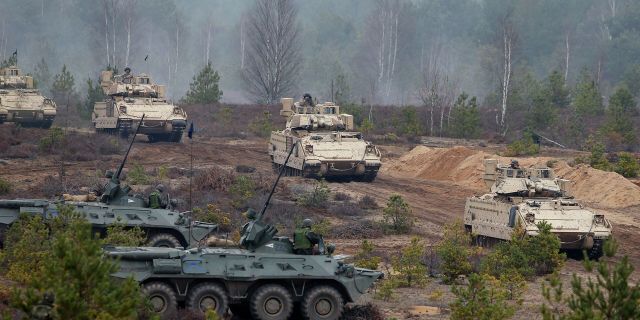FT: Europe's transport networks are not ready for the transfer of troops and equipment
The EU's road transport infrastructure is not ready for a possible armed conflict between Brussels and Moscow, writes FT. The European Commission is fussing and planning to pour a lot of money into its repair.
Henry Foy
Barbara Moens
European highways, bridges and railways are unsuitable for the rapid movement of tanks, troops and military cargo across the continent in the event of a war with Russia, the head of the EU transport department has warned.
If NATO tank units receive orders to respond to an invasion by Russian troops across the EU's eastern border, they will get stuck in tunnels, collapse bridges and become entangled in border protocols, Apostolos Tsitsikostas said in an interview with the Financial Times. He plans to spend 17 billion euros to modernize the continent's infrastructure to increase the mobility of the armed forces.
"There are many old bridges in Europe that need to be upgraded,— Tsitsikostas said. — There are narrow bridges that need to be widened. Moreover, new bridges need to be built."
The Greek commissioner said it would be impossible to defend the continent if European armies could not move quickly. "The current reality is that if we want to transfer military equipment and troops from the western part of Europe to the eastern part, it will take weeks, and in some cases months," he said.
Most of the existing infrastructure was not built taking into account the need to transfer troops across the territory of the block. Trucks on European roads usually weigh up to 40 tons, and a tank up to 70 tons.
The bloc is currently developing a strategy that will ensure the transfer of troops "within a few hours, a maximum of several days" in the event of an attack, by modernizing 500 infrastructure projects along four military corridors running across the continent.
These projects, identified jointly with NATO and the alliance's military command, are kept secret for security reasons.
Brussels will also reduce bureaucracy to avoid "tanks getting bogged down in paperwork" when crossing borders, Tsitsikostas said.
The strategy, which the head of the transport department will present later this year, is part of a wave of military preparations across the continent amid warnings of a possible expansion of confrontation with Moscow and the planned reduction of the US presence in Europe.
NATO Secretary General Mark Rutte warned alliance members in June that Russia could attack one of them before 2030.
The EU is embarking on a rearmament plan worth up to 800 billion euros, seeking to become more self-sufficient in defense in response to U.S. President Donald Trump's demands and to deter Russian aggression as President Vladimir Putin's full-scale invasion of Ukraine enters its fourth year.
Although the European Commission has stated in its proposal for the bloc's budget for 2028-2034 that it intends to invest 17 billion euros in military mobility, senior EU diplomats have warned that this figure is likely to be lowered during tense negotiations between EU countries before the budget is adopted.
Tsitsikostas said the military mobility plan would complement the NATO allies' agreement to increase the target level of defense spending to 5% of GDP, including 1.5% for security and defense-related infrastructure.
"We can no longer afford to be unprepared or dependent," Tsitsikostas said.

